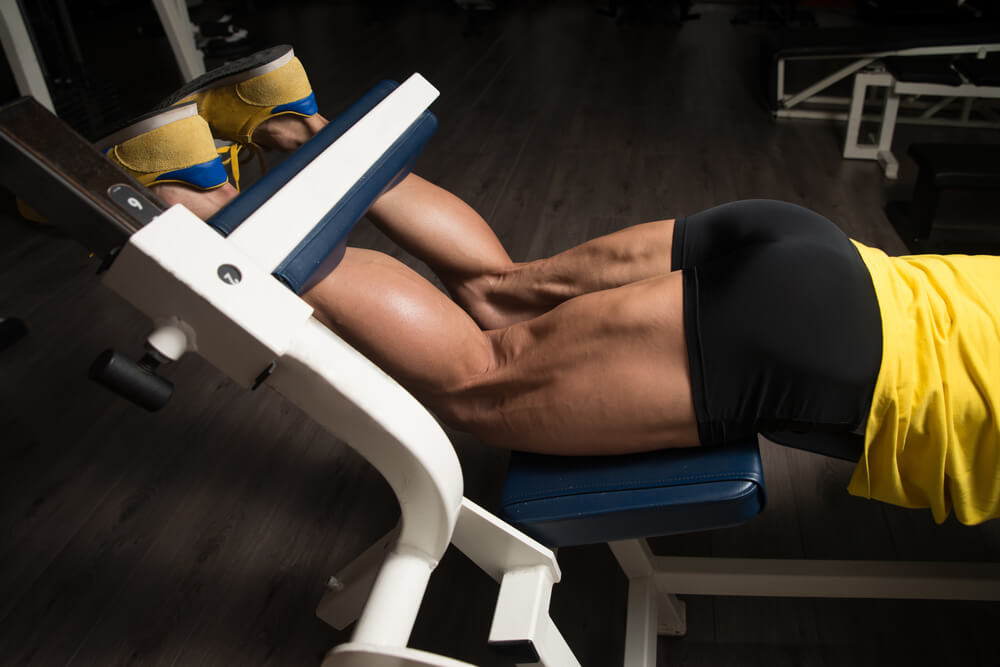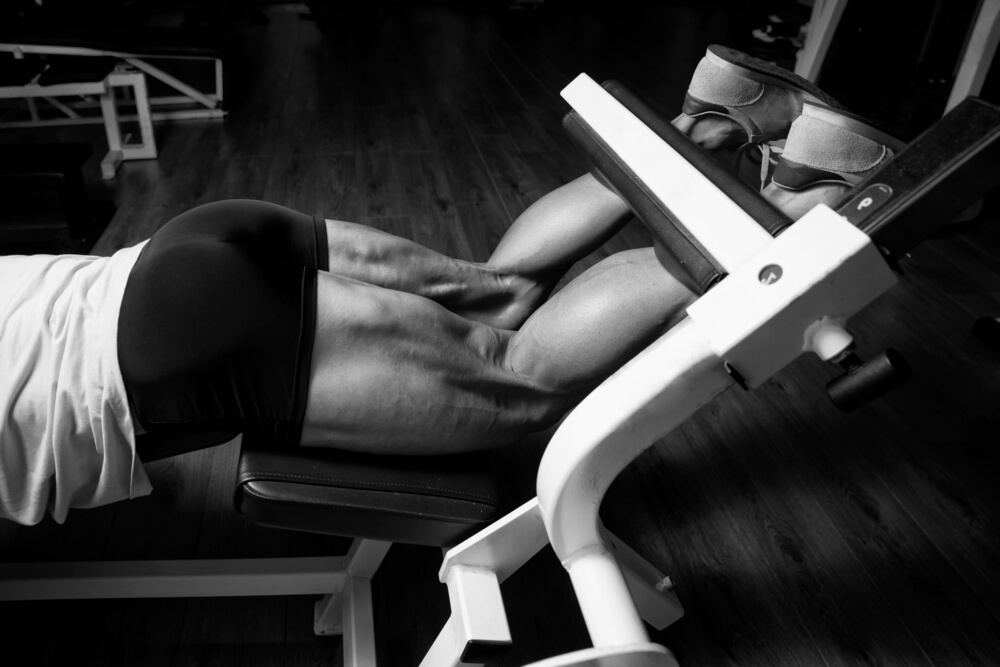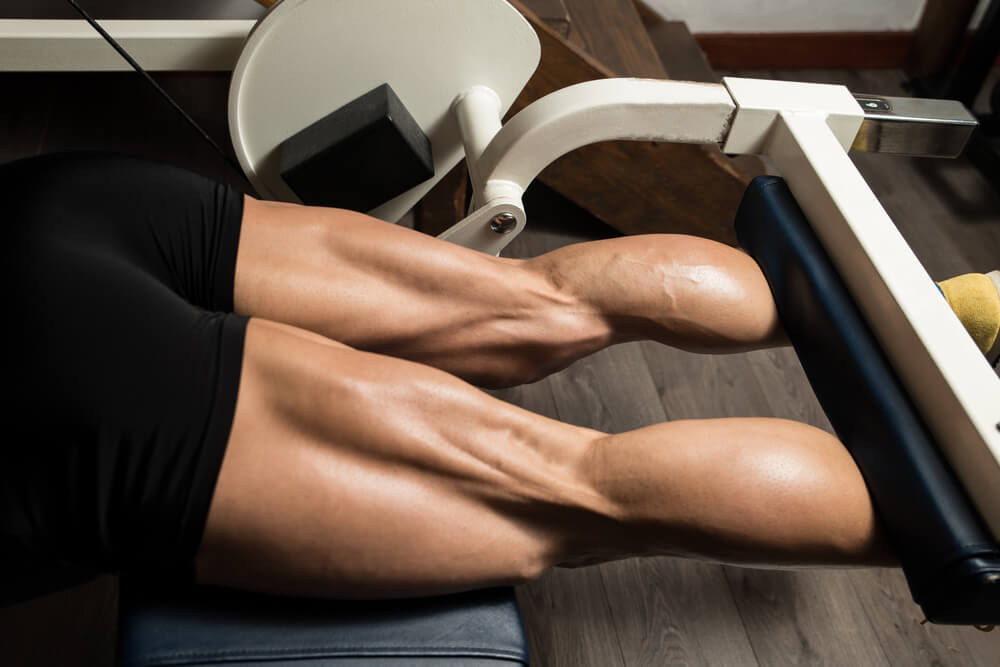
Do you neglect your hamstrings? Are you not sure what types of hamstring exercises you should be doing? Let’s change that! We have all the info you need to improve your hamstrings.
The good ole hammys serve a lot of purpose to your body. A significant number of people tend to go easier on the muscle groups in the back of their body, though. Increasingly, people seem to want to focus on the mirror muscles more than anything else. But, a strong set of hamstrings not only make you look good from behind, they also benefit you in plenty of other ways completing your legs workout for mass.
It’s important to know that with training these specific muscle groups, some exercises are better than others.
Not sure where to start?
Don’t worry. We’ll go over the best and most effective hamstring exercises.
What Purpose Do The Hamstrings Serve?
The hamstrings are made up of three large muscles. These muscles, the biceps femoris, the semimembranosus and the semitendinosus, are found along the backs of your thighs. They play a very important role in everyday activities such as walking, bike riding, jumping and lifting.
The hamstrings cross the knee and the hip joints. They work to bend the knees, draw the hips backward and tilt the pelvis. Having strong hamstrings not only allows you to perform movements, but it will also help with your posture.
People tend to think that the back muscles have everything to do with your posture, but that’s where they would be wrong.
Why?
Since the hamstrings run up the backs of your legs from the knee joints to your hips, they aid in hip stabilization. This, in turn, keeps the spine properly aligned. They also keep your knees from absorbing too much shock from certain activities. Proper posture literally starts from the ground up so, it’s important to train every muscle group efficiently.
When It Comes To Hamstrings, Flexibility Can Be Just As Important As Strength
It’s true: We are talking about the best exercises for your hamstrings. But if you want them completely healthy and fully functional, we have to add flexibility in here too.
Even if you have a good amount of strength in your muscles, but not much flexibility, this can really inhibit certain activities. Lack of flexibility in the hamstrings can also lead to bad posture and that’s because when you do not have the full range of motion in that specific muscle group, your hips and back can pay the price.
As stated, the connection between your hips and hamstrings affects your spine in a big way. Tight hamstrings will pull down on your hips and tilt your pelvis, resulting in an unnatural spinal position. This can lead to lower back pain and pressure on the sciatic nerve.

Prevent Lower Back Pain With Proper Stretching And Strength Training Techniques
The following hamstring stretches will benefit you on your healthy hamstring journey. Before you try them, make sure your muscles are properly warmed up.
Standing Hamstring Stretch
Place a chair or stool, that’s a little shorter than your hips, in front of you. Put your right heel on the chair/stool and flex your foot (toes pointing up). Your leg should be straight.
You should feel a stretch in your hamstring at this point, but to increase the stretch you can bend your body forward by hinging at the hips and reaching towards your raised foot. Hold this stretch for 30 seconds or longer and repeat the steps for your other leg.
Lying Hamstring Stretch
Lie on your back. Raise your left leg as high as you can while making sure your hips stay on the floor. Flex your foot and grab the back of your raised leg at the thigh and gently pull it towards your face.
If you want a deeper stretch in this position, you can place a resistance band or a towel around the ball of your foot and pull your leg back further with your hands. Hold this stretch for 30 seconds or more and then switch to your other leg.
Sitting Hamstring Stretch
Sit down on a mat or the floor. Extend your right leg out so that it is right in front of you. Bend your left leg and bring your foot in to rest against your right inner thigh.
Then, you should lean forward by hinging at the hips (not rounding your back) and reach towards the extended foot until you begin to feel a stretch in the hamstring. Hold this stretch for 30 seconds or more and then repeat with your other leg.
Remember to breathe during these stretches. You never want to hold your breath. Do not force your way into the stretches. If the flexibility is not quite there yet, keep working at it slowly. Try and increase the stretch time over the course of a few weeks by adding 5 to 10 seconds to your stretch each week. Static stretches (stretches that you hold) are best done after you complete your regular workouts.
Hamstring Exercises Get Them In Shape
Now comes the part you have been waiting for: The best ways to exercise your hamstrings. You’re going to be given a lot of options with these exercises and then you can put them together for a complete hammy burning workout. Always be sure to give your muscles a proper warm up beforehand to prevent injury and to ready your body for your leg workout.
Barbell Deadlift
The deadlift not only targets the hamstrings, it also works the glutes, quads, entire back, abs, arms, and shoulders. When done with good form, you can definitely build up your hamstring muscles by performing deadlifts regularly.
Powerlifters and bodybuilders have been performing the deadlift exercise for a long time.
Why?
It’s an all around great way to build up many muscles in the body at once. Start with a weight that you know you can handle safely or no weight at all on the bar just to practice with it.
Begin with the bar on the ground and stand in front of the bar with your feet a little wider than shoulder-width apart. Walk up to the bar and slide your feet under it to where the balls of your feet are centered with the bar.
Bend your knees slightly so that your shins are close to the bar, but not touching. Hinge at your hips and grip the bar with palms down. Your hands should be shoulder-width apart on the bar. Position your head forward and stick your chest out. Make sure your back is flat and not rounded or arched. Take a deep breath, hold it and come to a standing position while keeping the bar close to your body. Lock your hips and knees. The bar should be against your legs now and you can release the breath.
To return to the starting position, push your hips back and lower the weight till it reaches your knees then bend them. Do not bend the knees first or the bar will hit them (ouch).

Lying Leg Curls (Prone Position)
The lying leg curl specifically targets the hamstrings for your muscle building leg workouts.
Bonus: You can do it lying down!
Who doesn’t like those kinds of exercises?
For this specific exercise, you can either do it on the hamstring curl machine at the gym or use a heavy dumbbell by laying on your stomach and grabbing the dumbbell by its top weight while it’s standing upright. Adjust the machine so that it fits your height, the lever pad (the part you are going to lift with your legs) should be just a couple of inches below your calves.
Lay face down on the bench, fully extend your legs and grab the handles of the machine. Slip your legs under the lever pad, take a deep breath and, as you exhale, curl the weight up as far as you can without bringing your thighs off of the bench.
Hold the position for a second. Take another breath and, as you exhale, slowly lower your legs back to the starting position.
Lying Leg Curls With A Stability Ball
This exercise targets your hamstrings and glutes. The difference from the previous exercise is that with this one, you will be lying on your back instead of your belly, and the stability ball provides the surface and the resistance. By using a stability ball for these types of exercises, you get the bonus of engaging more of your stabilizing muscles due to the instability of the ball.
Wonder why they don’t call it an instability ball then?
Lay on your back on a mat or the floor with your legs extended and your heels on the stability ball. Keep your arms by your sides with your palms facing down. Dig into the ball with your heels and raise your hips off of the floor/mat. With your hips in the air, slowly roll the ball towards you by bending at the knees.
Return to the starting position. This exercise can also be done with one leg at a time for an extra challenge.
Plate Drags
With all the fancy workout equipment available, this one might seem a bit primal, but it truly gets the job done. All you need is a large weighted plate. You can find these in the free weights section of the gym.
Lay on your back and make sure you have something to hold onto that is heavy and stable. Fully extend your legs and place your right heel in the center of the weight plate. Hold on to something with your hands to keep your body from sliding and drag the weight towards you by bending your knee.
Slide the weight plate back to the starting position, repeat for as many reps as you like, then switch to the opposite leg.
Barbell Squats
Squats are usually thought to just work the glutes. But, they also work the quads and hamstrings. Research shows that hamstring engagement is limited during regular squats, so why is this exercise in the mix?
Because there is a secret you may not know.
You can increase the degree of engagement to the hamstrings by increasing the depth of your squat. The lower you sink into that squat, the more your quadriceps will lengthen and more tension will be placed on your hamstrings. Squatting low will also help to stabilize your knee joints so it’s a good thing all around. Adding weight to your squat gives your muscles more of a challenge and makes them work even harder.
Place desired weight plates on the bar and make sure it is centered on the squat rack. Grab the bar with your hands shoulder-width apart and tuck your head under the bar so that its placement is on the back of your shoulders. Your feet should be flat on the floor and slightly wider than hip-width apart.
Lift the bar off of the squat rack and take a step back. Bend your knees and lower yourself until your thighs are parallel to the floor. Keep your back straight and stick your butt out as if you are about to reach and sit back onto a chair. Come back to a standing position to complete the repetition.
Conclusion
There you have it!
These are some of the absolute best and most effective hamstring exercises there are. Give these exercises a try and be sure to use proper form. Also, do not forget to use a suitable weight that doesn’t overload you and that will allow you to perform your target amount of reps.
Safety should always come first because if injuries occur, that will only set you back when your plan is to keep moving forward. Take care of those hammys and they’ll get you to where you want to be.
By Heather Neff, CPT
Latest posts by Terry M (see all)
- Garage Gyms - Aug 1, 2018
- Kettlebells – Why They Should Be Added To Your Routine. - Jul 24, 2018
- Weight Belts: What Are They Really For? - May 31, 2018










Thanx for sharing this exercises..really great post!!
Amazing list of hamstring exercises i am focusing on my lower body right now to improve my core and lower body strength. Great blog, nice post.